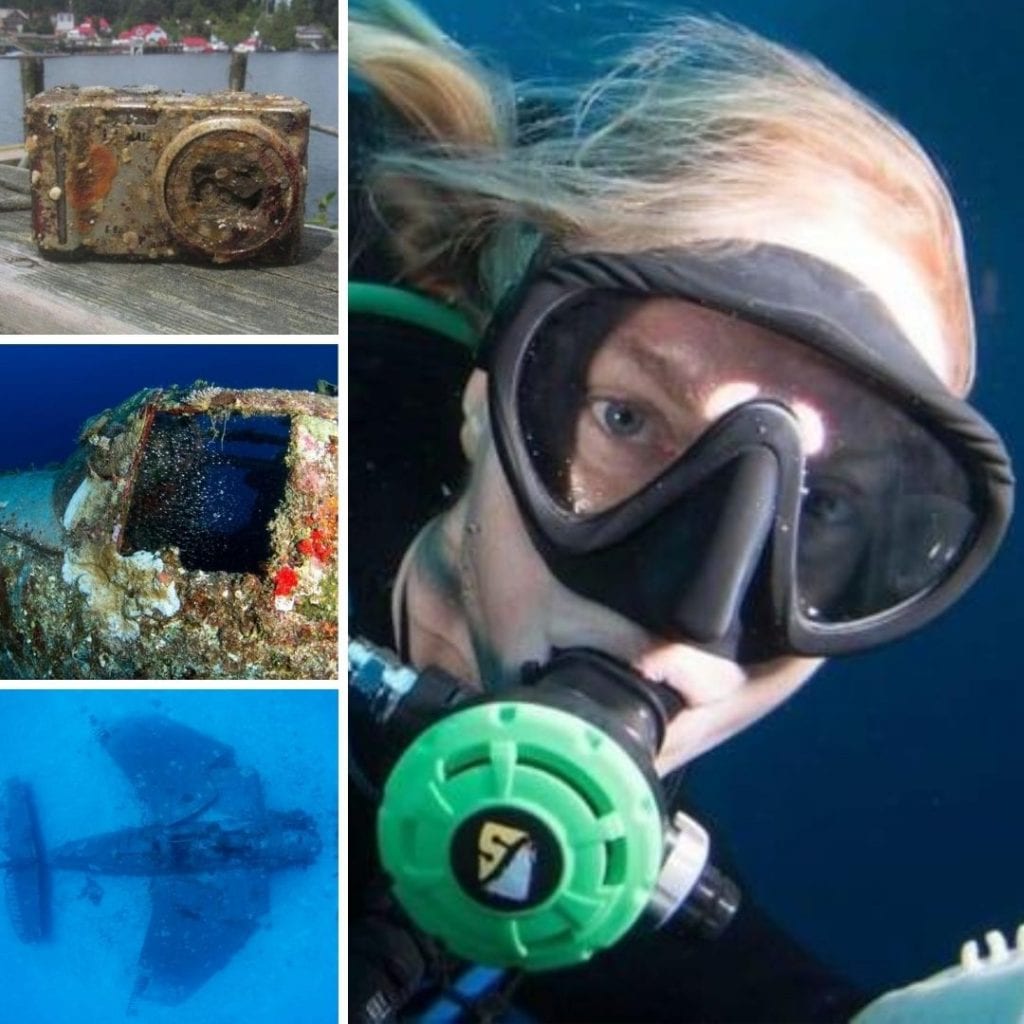
The world we inhabit is fascinating with vast lands and the deepest darkest depths of marine waters that we haven’t explored yet. Oceans take up about 71% of the earth, and scientists, as well as novice deep-sea divers, keep researching to demystify what goes on underneath these water bodies. That describes Brandi Mueller, an underwater photographer/ scuba diver.
Mueller spent years with the coast guard and several more as a dive instructor. In that time, she’d only stumbled upon beautiful locations but no shipwrecks or long-forgotten treasures to boast about. Mueller just about gave up on discovering the next big marine find, when she happened upon a graveyard of planes resting on the seafloor.
Brandi Mueller, The Budding Scuba Diver
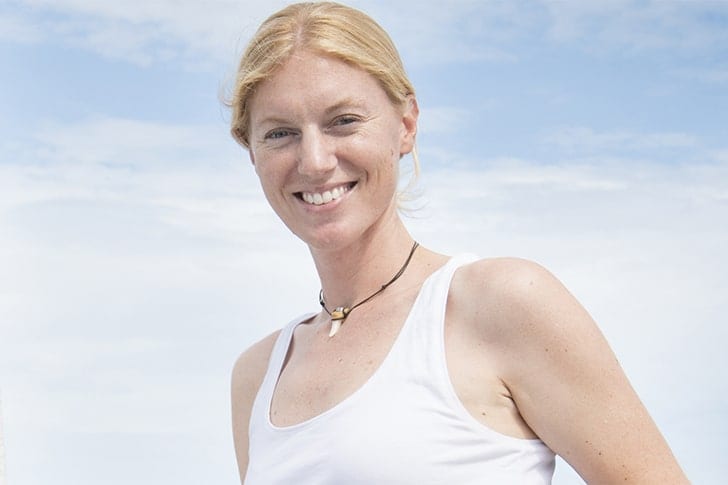
Brandi Mueller is a Cameron, Wisconsin native. She developed an obsession with photography and the ocean quite early, when her family took seaside vacations. At 15, Mueller traveled to New Zealand as an exchange student, and that’s where she started taking scuba diving lessons.
Mueller, like every other scuba diving enthusiast, became thrilled with the prospect of discovering the wonders our marine waters contain. The earth’s oceans account for 97% of the water found on our planet. These water bodies also house an estimated 95% of the planet’s living creatures. In essence, humans and other land-inhabiting animals are just but a small minority when talking about life on earth.
Answering The Call Of Duty
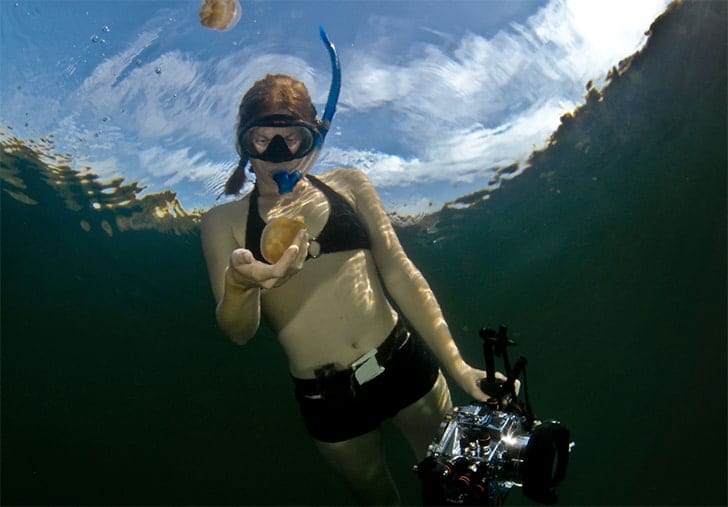
Before Mueller dived into a career traversing the depths of the ocean, she answered the call of duty right after finishing high school. She enlisted with the United States Coast Guard, and besides offering her service to her country, it quenched her travel bug. Mueller visited some of the world’s greatest ports during her time with the Coast Guard.
Mueller had the opportunity to visit Africa, the Caribbean, Hawaii, Iceland, Australia, and many other fascinating destinations. She became a dive instructor while in college, and she started offering diving classes. While at it, Mueller also learned to pilot water vessels.
An Eye For Nature

Mueller inherited her love for photography from her folks. Growing up, she borrowed her folks’ camera to capture local fauna and flora. Coupled with the diving skills she shaped over the years, Mueller soon became a talented nature photographer. Mueller soon dived fully into her two passions, nature and photography.
While reading about our oceans isn’t something we all find interesting, mainly when it’s all about scientific facts, there’s something magical and humbling that comes with seeing photos of marine biodiversities. Mueller’s vibrant and captivating photos have seen her receive several accolades from the Smithsonian and National Geographic.
Fascinating Diving Spots
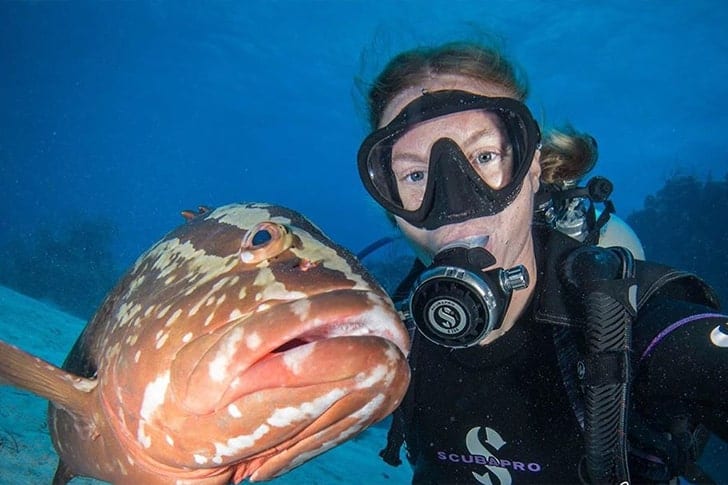
As Mueller continued honing her scuba diving skills by learning to captain boats and dispensing her knowledge about diving and the ocean to others, she grew fond of certain dive spots. Truk Lagoon, now known as Chuuk, Micronesia, became one of her favorite diving spots.
The site’s rich history as a World War II battle site, where scores of war aircraft and ships were wrecked, captivated Mueller. Decades later and with some help from the warm, healthy Micronesian waters, these old vessels transformed into “ship reefs.” Swarmed with fish and other marine life, the wreckages are a diver’s haven.
Moving Onto Greater Things
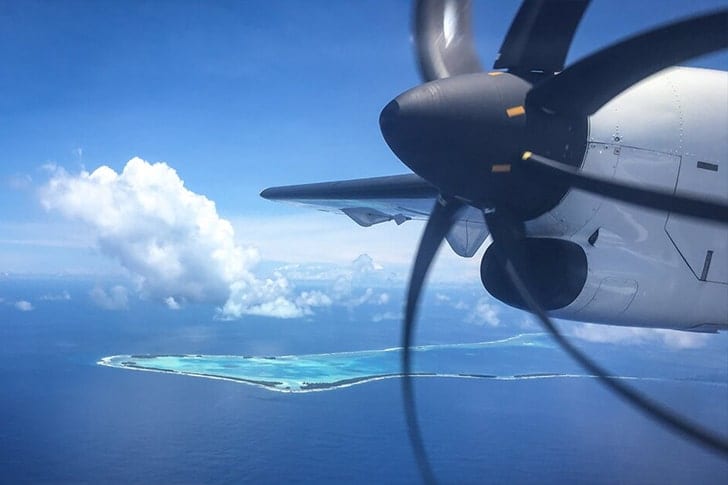
After putting in a decade with the Coast Guard and also teaching scuba diving, Mueller figured she needed a break. Mueller didn’t head down to Chuuk as expected, but instead, she set out to The Marshall Islands. The thin strips of land sandwiched between the Philippines and Hawaii make up The Marshall Islands.
Mueller did what typical vacationers do during her first few days on the islands. She then headed out to explore a new dive spot with a friend. They set off five miles from the Roi-Namur island, a hidden gem in the Marshalls known only amongst divers.
Swimming In Uncharted Waters
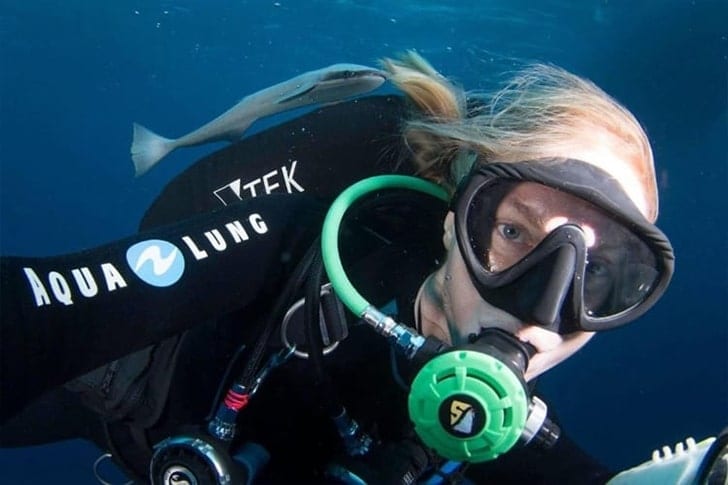
The Marshall Islands provide surreal beauty to indulge, and they are also laden with famous sites where interesting items like shipwrecks rest on the ocean floor. That’s what drew Mueller to the destination, and the particular spot she ended up exploring remained relatively unexplored by divers.
Things kicked off regularly, at first, when Mueller set off from the Roi-Namur island. Then something strange caught Mueller’s attention during the dive. As she continued diving deeper into the waters, the blue haze beneath revealed a massive and bright shape just within her reach.
X Marks The Spot
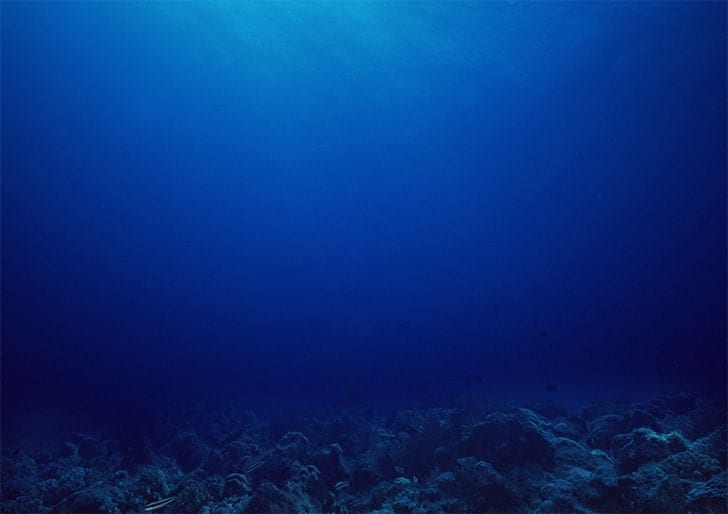
Much like coming across hidden treasures, Mueller couldn’t help but get excited as she dove closer to the massive shapes underneath the waters. She couldn’t shake off the feeling that it was the significant find she envisioned discovering. Mueller continued diving closer to the object.
The closer she got, the clearer the shapes appeared. Mueller could make out large, flat metal pieces hanging precariously off of large steel tubes. Broken sheets of glass rested on the stand, and the metals also strikingly bore colorful emblems. Those emblems ended up being the key to the puzzle about the mysterious objects.
Not Prepared For The Find
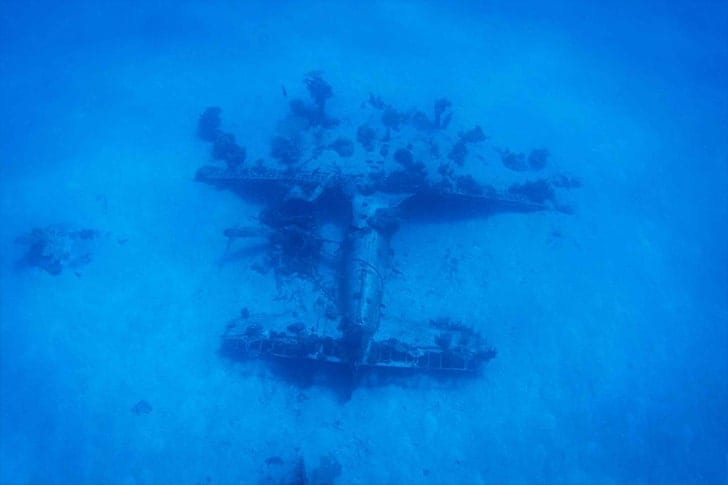
Mueller hadn’t expected to stumble upon such a fantastic find. She hadn’t even set her camera to photograph the scene, but it took her a few seconds to start snapping pictures. Mueller continued swimming towards the find and taking photos of the wreckage.
Mueller eventually got to the metallic object and noticed that the metals were blank, except for the colorful emblems. Mueller couldn’t contain her excitement at that point, knowing that she had just happened across a huge discovery resting on the seabed. Mueller kept exploring the site, and she couldn’t have anticipated that more surprises were in store.
A Historical Discovery
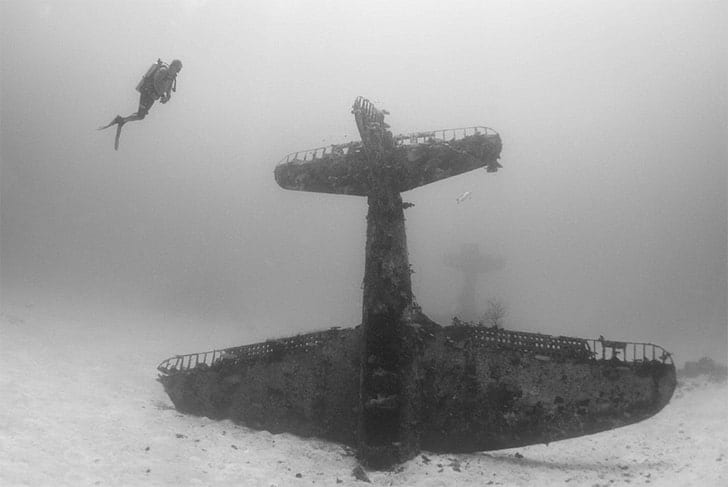
Mueller approached the vessel and studied the paintings covering sections of the metal. That’s when it became clear that she had just discovered a wrecked airplane. Mueller could also assess that the craft had stayed hidden on the bottom of the Pacific for decades.
Questions started flying around Mueller’s mind, why had someone deserted a plane at that spot, and why had no one found it before? Mueller also couldn’t have anticipated that the wreck was just the beginning. As she kept looking around, she uncovered more planes resting at the site.
An Airplane Graveyard
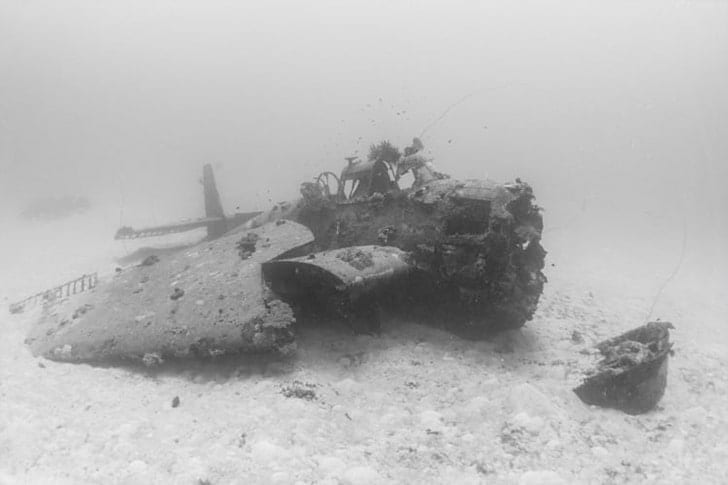
Mueller came across another peripheral shape, as she swam around the vicinity of the wreck. No sooner had she reached the second plane, yet another aircraft appeared at the same site. What Mueller was looking at was an underwater plane airplane graveyard.
Something else that Mueller couldn’t help noticing was the almost excellent condition of the planes. That meant that they had gone unnoticed and unexplored since they landed on the ocean bed. Curiously, Mueller couldn’t see any human remains around the sunken crafts raising even more questions about how they got there.
Piecing It All Together
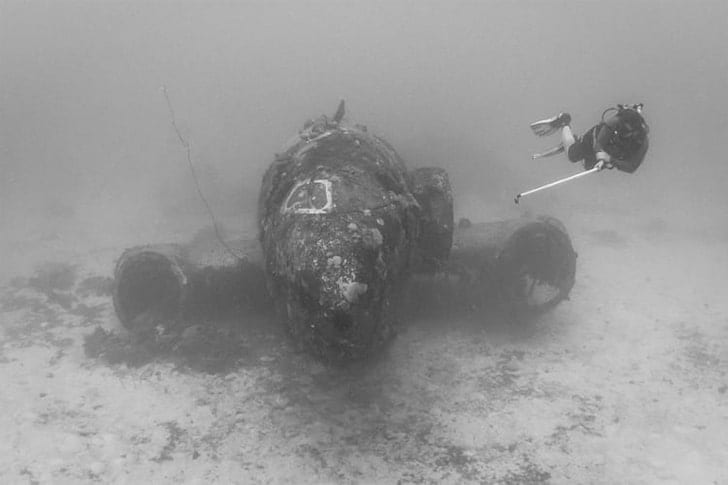
Mueller believed that the wreckages were war crafts from World War II, the Vietnam War, or perhaps the Korean War. That aside, it didn’t answer how they ended up at the bottom of the ocean. Could they have been shot down, or did they sink after an aircraft transporting them had a mishap?
With no human remains in sight, Mueller ruled out the possibility that they had been hit while flying the skies over the area. That was the biggest question Mueller wanted to be answered, and she would find it once she got back to the surface.
Documenting The Find
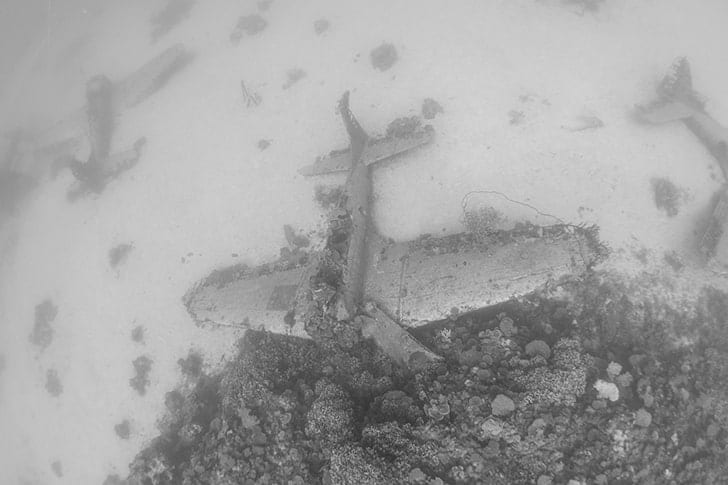
Before leaving the airplane graveyard for the surface, Mueller continued taking as many photos as she could of the wreckage. The barnacles covering the rusted metal were the only signs that the planes had taken a beating in any way.
Minor scratches and scrapes existed on their bodies, but Mueller didn’t spot any deformed fuselages or bullet holes. That told her that these crafts still had several years to them before they met their ultimate fate. Mueller also appreciated how sea life had taken over the planes but still kept them intact as much as possible.
Co-Existing Beneath The Ocean
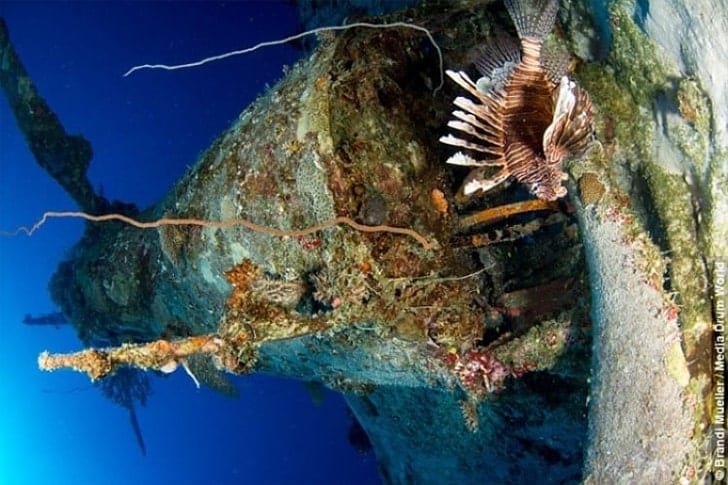
The wreck also showed how marine life adapts and co-exist with foreign objects on the ocean floor. This photo that Mueller captured shows a school of fish that had transformed the rusty cockpit into their home. Mueller explained that we might never understand the resiliency of the ocean.
Mueller added that she was amazed by how the ocean can take chunks of metal to create life from it. Every plane appeared to have a thriving ecosystem around it, and unlike most wrecks that might have been shattered to pieces, these remained intact.
A Delicate Process
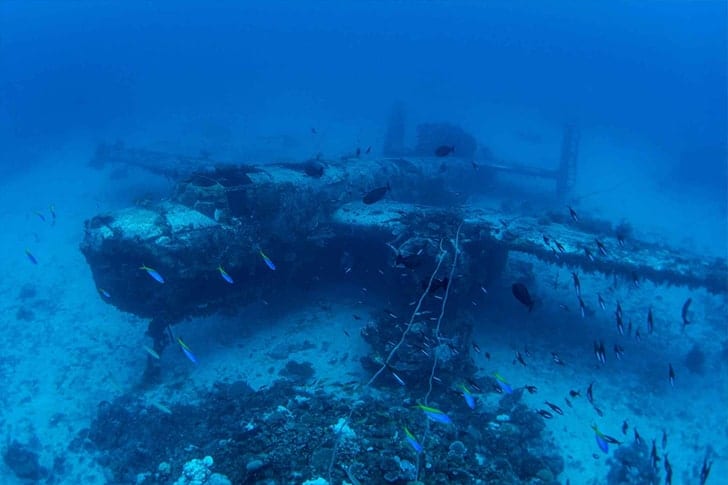
The photos Mueller took appear dreamlike, but she had to approach the process of taking them with care. The delicate nature of the debris meant that in the process, Mueller could accidentally cause some damage. Thankfully, her experience came into play, and she accorded the process utmost care.
A couple of the crafts had sand covering them, and they almost looked like sharks. Others stood in vertical angles straight on their noses, while more rested horizontally. Soon, Mueller had inspected the graveyard and just about every craft at the site. The total she came up with was astonishing.
Hundreds of Sunken Airplanes
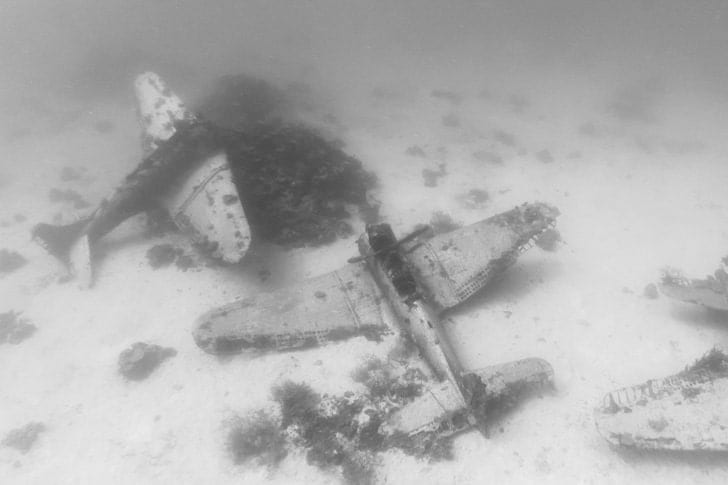
Mueller counted more than 100 wrecked planes at the site. Mueller also wanted to derive as many details as she could about the site to help historians figure out what had taken place at the site. Mueller explained that planes don’t belong underwater, and it was strange seeing them there.
At the same time, she knew that it was an amazing and unique find. When she tallied the number of wrecked planes at the site, she came up with 150. Mueller still couldn’t shake off the nagging feeling that there were more details to be uncovered about the planes.
A Dump Site For World War II Planes
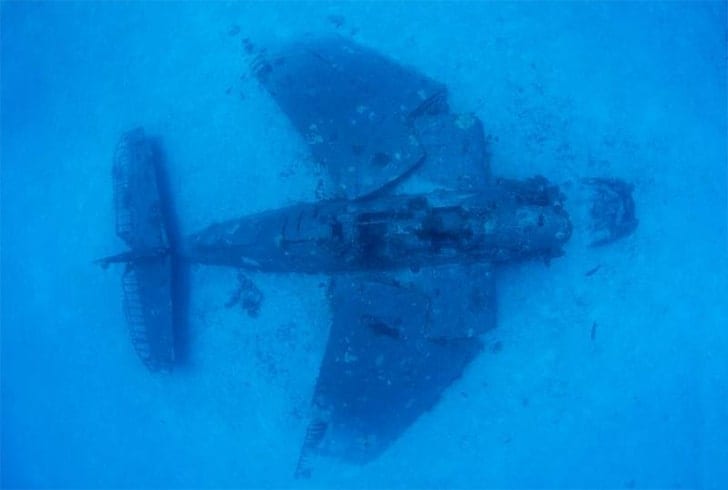
Mueller eventually made her way back to the surface, armed with the incredible images she had taken. She looked forward to sharing her discovery with the world and finding out more about the planes. On the boat ride back to the dock, Mueller changed her mind.
Mueller felt that she should find out all the details she could before unveiling her discovery to the rest of the world. She toyed with the idea that the wrecks had World War II origins because they didn’t quite look like the crafts from the Vietnam or Korean wars.
Digging Around For More Information
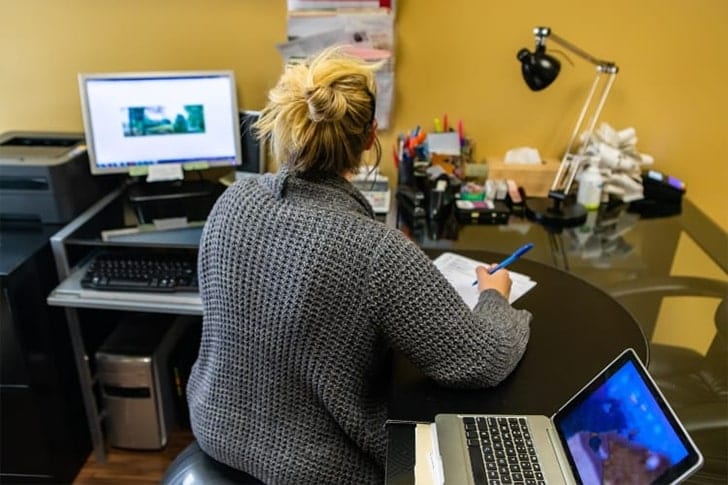
Mueller got to work and researched the airplanes used during World War II aircraft. Her suspicions were confirmed when she learned that the Robi-Namur island had served as a dumping ground for the American military. Historians and archaeologists knew this fact, but they had never tracked down the exact location.
That’s where the military disposed of planes, plenty of airplanes to be precise. Operation Rollup is something else that Mueller came across, and she realized that not many Americans knew about it. The project rolled out soon after World War II, and it explained why the planes landed at the bottom of the ocean.
The Secret Military Operation
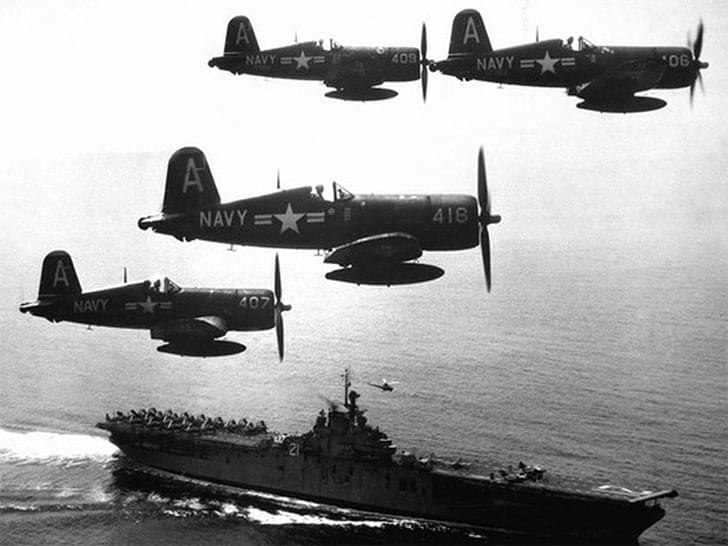
Operation Rollup focused on disposing of military jeeps, tanks, and planes that had been transported across the Pacific in the wake of the Second World War. The government was justified for spending considerable amounts on the combat vehicles, but it cost, even more, to ship them back over the Pacific.
They settled on a strategy that took care of the problem, and that was dumping these vessels in the Pacific. That explained the near-pristine state of the planes that Mueller came across. That is because a majority of them hadn’t even been used in the first place.
Money Washed Down
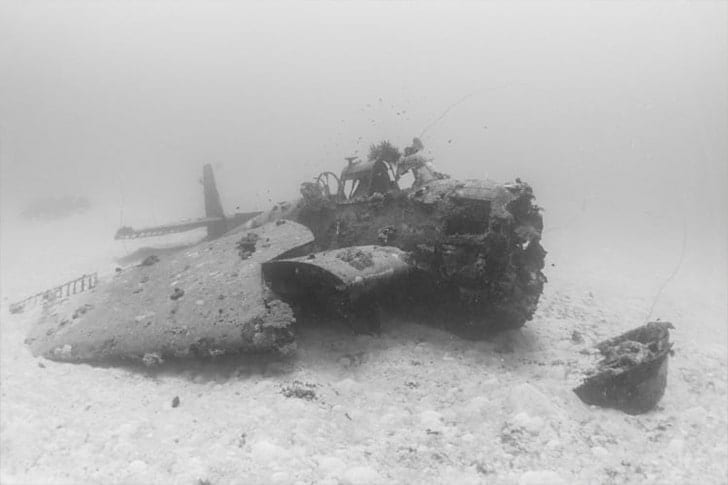
As simple as the explanation sounds, that is the series of events that created the underwater airplane graveyard. The Navy just loaded the aircraft in a carrier with the help of forklifts and then pushed them off into the ocean.
The area soon earned the name “Million Dollar Point” because, as you can imagine, the planes symbolize a large sum of money wasted back in the day. Some people still refer to it as an Airplane Graveyard, and indeed, the discovery sparked some outrage owing to the sheer amount of wastage.
Seven-Decade-Long Secret
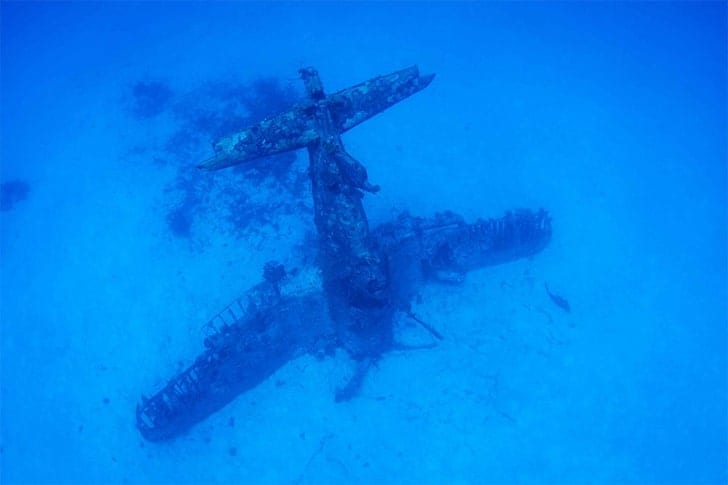
Even more incredible, the airplane graveyard stayed hidden for more than seven decades. The planes in every sense became underwater statues in the time, along with hosting vibrant marine life. Mueller contributed to helping preserve the beauty through the photos she captured.
The planes showed signs that the deterioration had started setting in, and with the discovery, the planes risked suffering damage as more people dove down to study them. Mueller even said that she believes that soon there won’t be any debris left. Historians used Mueller’s photos to identify the crafts accurately.
The Kwajalein Atoll Planes
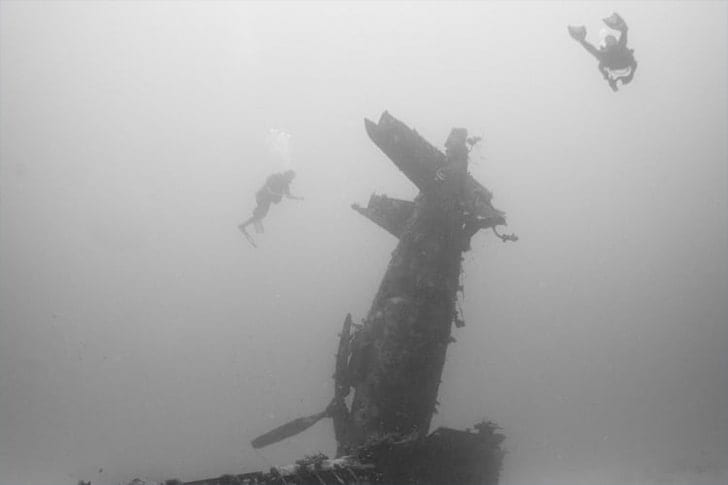
The exact spot where the planes rested is called the Kwajalein Atoll lagoon. The wrecks include American and Japanese WWII crafts as well as 25 shipwrecks. Mueller discovered and photographed an F4U Corsair that had landed on its propeller. The craft’s wings were in the sand, and it stayed in an upright position over the decades.
Some of the other allied planes that Mueller photographed include F4F Wildcats, Helldivers, Curtiss C-46 Commando, and B-25 Mitchell. The hundreds, if not thousands, of fishes, spotted thriving around the wreckage, also prove equally as impressive.
Marine Life Habitats

Mueller’s photos also showed the beautifully stunning coral, algae, and colorful fish that inhabited the wrecked planes. A B-25 bomber housed hundreds of yellow and blue fishes that Mueller photographed swimming around its nose. According to Mueller, it’s nature’s way of honoring fallen heroes.
The Second World War went down in history as one of the deadliest. Mueller explained that in her point of view, the marine life that now decorated the sunken vessels was akin to adorning the graves of the scores of people who sacrificed their lives for their country.
The Almost Forgotten Douglas
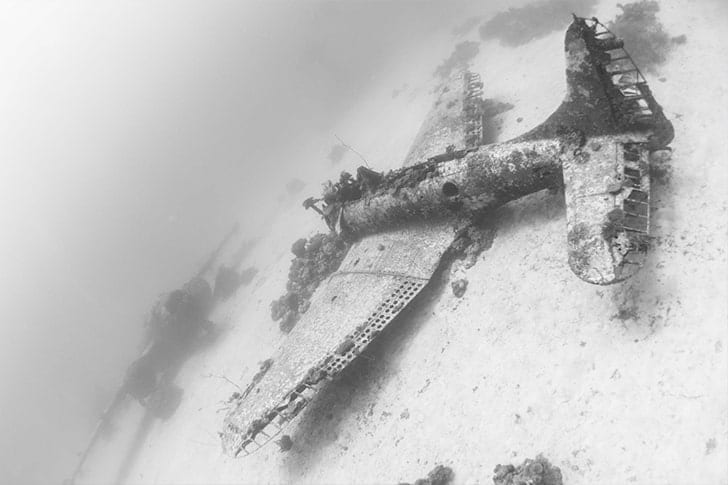
Even more fascinating was the discovery of the Douglas SBD in the graveyard because the craft was believed to have been lost to time. The Dauntless went into production between 1940 and 1944. The plane had a history of serving fatal blows to Japanese Carriers during the 1942 Battle of Midway.
Most Douglas SBDs brokedown or disappeared soon after the Second World War. That’s what made the find quite a treasure and treat for aviator enthusiasts. The faster and larger Curtiss SB2C Helldriver replaced the Dauntless in the ‘40s. Delays in the production of the Helldriver led to the cancelation of orders by Australian and British troops.
Three Planes Separated By Three Feet
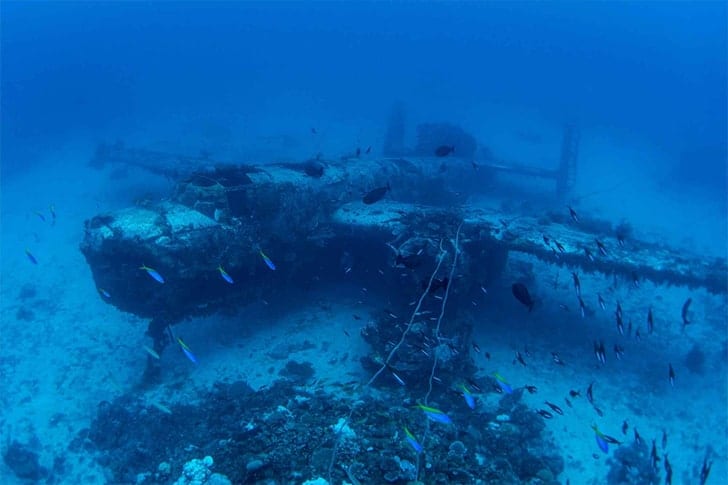
Three planes managed to land three feet in proximity to each other. Only the wings and tails of most of the crafts litter the ocean floor while the rest of their bodies remain relatively intact. Looking at it from an artistic point of view, they created breathtaking photos.
Mueller went with a “birds-eye” view for most of the photos showing their entire length as well as their wingspans. In this angle, the airplanes seem somehow majestic on their resting grounds. The images are also treasures for the books because they will forever document the great discovery.
Not Every Plane Survived
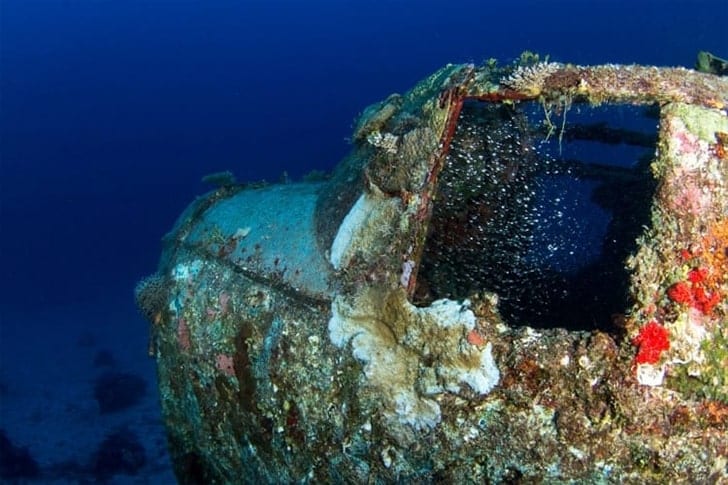
Naturally, nature has a way of phasing out the weak, and not every airplane dumped in the Pacific survived. Others rest on the ocean bed in states of disarray, while some were destroyed before they hit the ground underneath.
Even the broken plane pieces still tell a lot about their history. The Marshall Islands find isn’t the first that captures how the U.S. military abandoned equipment. Other finds are yet to be uncovered to show the strange ways that the military got rid of costly equipment.
War Is Expensive
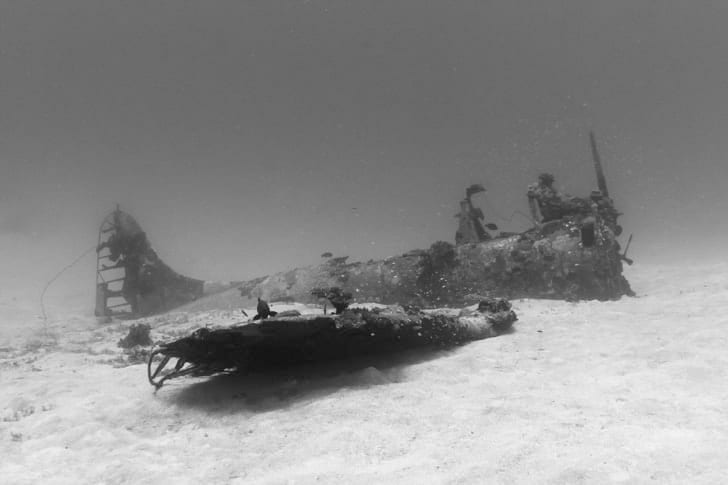
We’ve heard it said before; war is an expensive endeavor. In 1945, the U.S. shelled out about $4 trillion (in today’s estimates) throughout the Second World War. If the war broke out today, its cost would be ten times that amount!
Taxpayers wouldn’t have it in this day and age, but it doesn’t excuse the military’s actions back in the day. That’s why the government never talked about the dump location until its past actions came to light. Mueller’s discovery also made the Marshall Islands quite the tourist attraction, helping the area’s economy significantly.
A Publication Documenting The Discovery
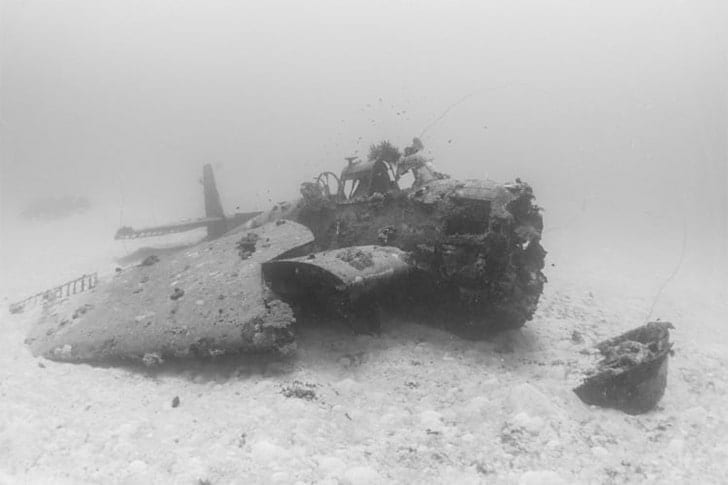
Mueller decided to compile the images she’s taken from the site on a publication. Titled The Airplane Graveyard: The Forgotten WWII Warbirds, the publication gives readers a visual representation of the historic airplanes along with their interesting stories.
The publication also dives further into the topic of how the warbirds landed on the ocean bed. Mueller explained that perhaps the ocean wanted us to know more about the war. The most important reminder is what the world had to go through to bring us the current state of peace and freedom that we enjoy. Incredibly, Mueller’s find isn’t the only discovery of such magnitude found underneath the ocean.
Discovering Ocean Biodiversity
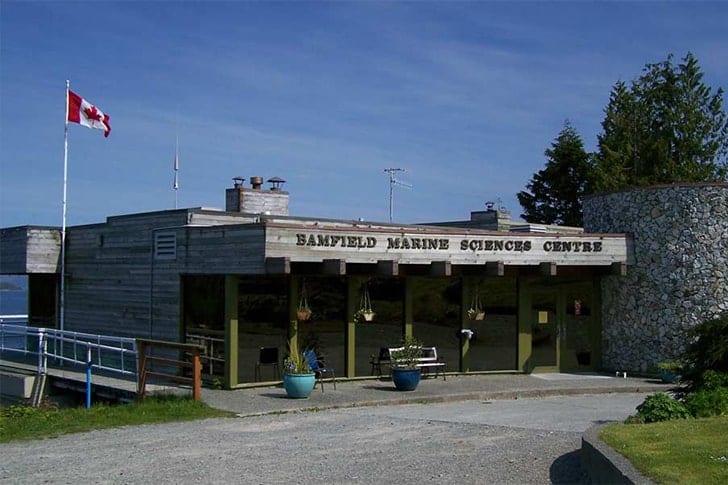
Back in 2014, an expedition team from the British Columbia-based Fraser University set out to explore deep-sea waters. They wanted to study the behavior patterns of the sea inhabitants off the coast of West Vancouver Island.
The team only planned on taking a couple of photos and notes of the oceanic wildlife. Their plans changed once they set out to the cold blue sea, not knowing what awaited them. Once they dived to the seafloor, they observed some odd items that they couldn’t identify. The team’s two divers swam closer for a better view.
Shipwrecked Memories
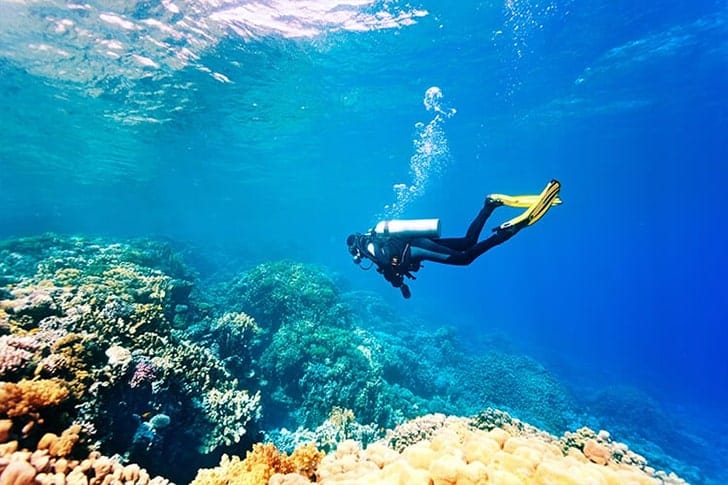
Tella Osler and Beau Doherty, the university students and divers who spotted the find, were determined to remove any trash they came across from the seafloor. They retrieved the item that didn’t belong on the seafloor - an old camera.
They discovered a miniature ecosystem living within the rusty camera. The team’s leader, Siobhan Gray, later examined the camera and found the memory card in pretty good shape. Through the photos on the SD card, they got it back to its rightful owner, a Vancouver artist called Paul Burgoyne, who had gotten shipwrecked in 2012.
